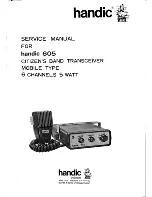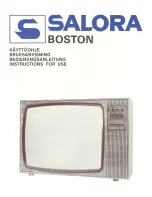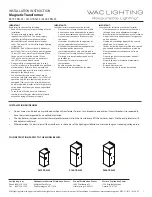
7700 MultiFrame Manual
7707IT Multi-Channel Intercom Fiber Transceiver
Page - 18
Revision 1.7
4.2.4. Selecting an Interface Profile
The 7707IT can be easily configured for different applications using the programmed profiles, selectable
using the card-edge interface or through
Vista
LINK
®
control. Each channel is configurable as party-line or
matrix, and to interface with the following industry-standard intercom systems.
•
RTS-Telex Matrix
4-Wire Audio, and RS-485 (plus GPIO auxiliary signals)
•
ClearCom Matrix
4-Wire Audio, and RS-422 (plus GPIO auxiliary signals)
•
RTS-Telex Party-line
1-Wire Audio (plus RS-422, and GPIO auxiliary signals)
•
ClearCom Party-line
1-Wire Audio (plus RS-422, and GPIO auxiliary signals)
Each of these industry-standard intercom interface types requires different intercom audio levels and call-
signaling types. The 7707IT provides a factory-default interface profile for each of the above intercom
types. Selection of a profile will match intercom audio and call-signaling settings for a typical installation
of that type. Each channel can be individually profiled for different intercom types.
Audio for each channel may be configured for interface to Matrix or Party-line systems. Specifications for
these two intercom audio types are provided in section 3.1 of this manual. These specifications are
designed to accommodate systems from multiple manufacturers. Input/output functions of some audio
pins change with configuration. Please refer to the pin-out diagrams as shown in Figure 2-3 and Figure
2-4.
Never apply a powered or “wet” party-line signal to a terminal that is not
designated as a party-line connection.
Among the industry-standard matrix intercom products, two types of serial data are used for call signaling.
RTS-Telex uses RS-485 serial data, while ClearCom uses RS-422 serial data. The 7707IT
accommodates either of these through selection of the associated profiles. Input/output functions of
some serial data pins change with configuration. Please refer to the pinout diagram depicted in Figure 2-3
and Figure 2-4.
Among the industry-standard party-line intercom products, two types of call-signaling are used. RTS-Telex
uses a 20kHz frequency component superimposed upon the audio signal. ClearCom uses a DC voltage
component superimposed upon the audio signal. The 7707IT accommodates either of these through
selection of the associated profiles.
Therefore, four types of call-signaling are present in the industry; two types for matrix, and two types for
party-line. The 7707IT accommodates all of these via selection of an interface profile. This provides a
user-friendly means of configuring the 7707IT for a specific application.
















































